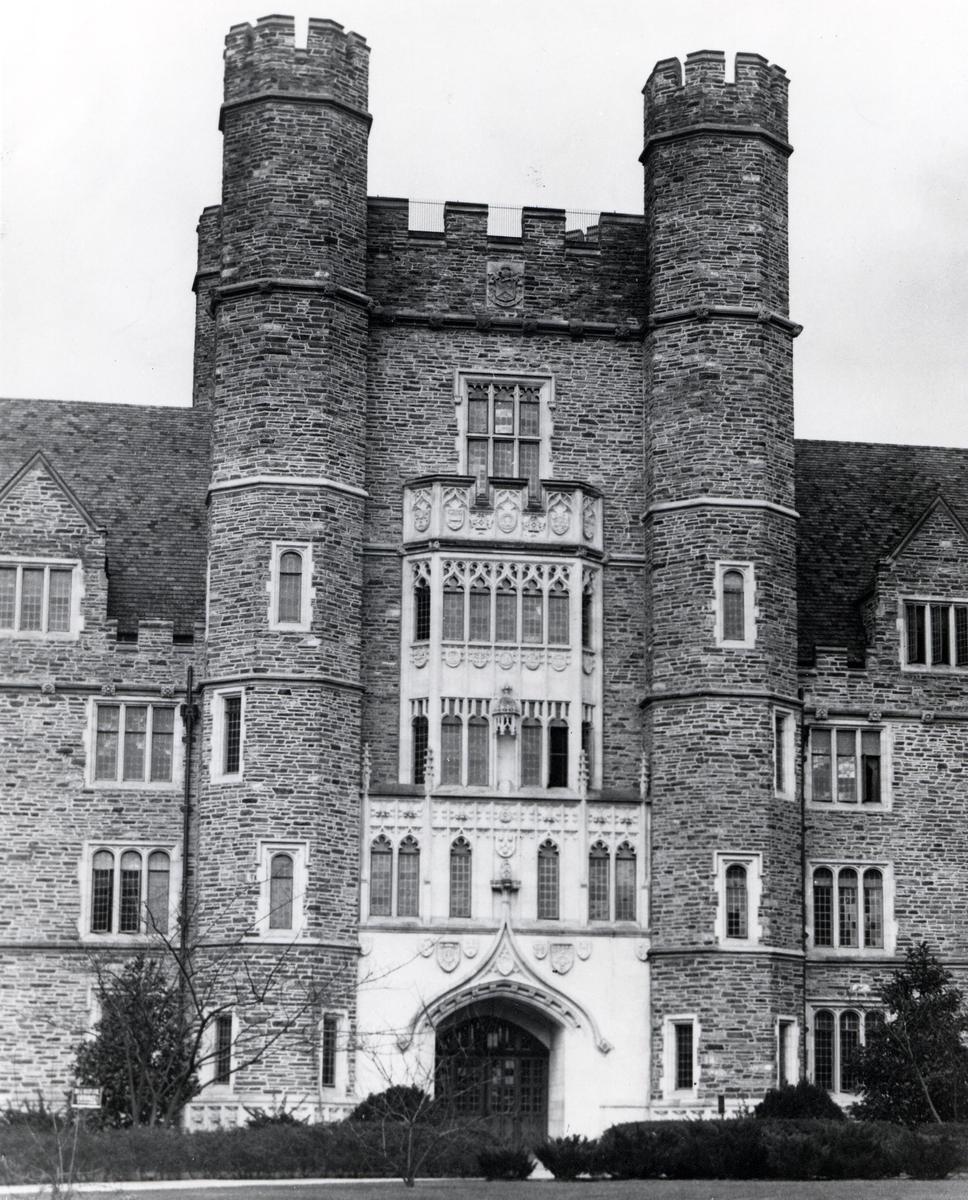 84 years ago this month, July 1930, construction of the Davison Building was completed. Then simply known as the School of Medicine Building, the structure was built to resemble the collegiate gothic architecture found throughout Duke’s main campus, and included common features of the style such as arches, buttresses, and parapets.
84 years ago this month, July 1930, construction of the Davison Building was completed. Then simply known as the School of Medicine Building, the structure was built to resemble the collegiate gothic architecture found throughout Duke’s main campus, and included common features of the style such as arches, buttresses, and parapets.
Buildings on the main campus also frequently displayed shields connected to the department or discipline they housed, and the Davison Building was no different: 15 prominent medical and educational institutions are represented above the entrance. Included are some of the most influential medical schools throughout the world, such as the University of Virginia, McGill University, Royal College of Surgeons, University of Padua, and Trinity College (Dublin). The shields were the work of the first School of Medicine  Dean, Wilburt Davison, who the building was later renamed for. When he was hired in 1926, Davison was charged with the task of planning, organizing, and overseeing the School of Medicine and Duke University Hospital. Before construction began in the late 1920’s, he wrote to the chosen institutions to ask for use of their shields on Duke’s new medical building. To the left is the reply from the American College of Physicians in Philadelphia granting permission. (Click on the image to enlarge.)
Dean, Wilburt Davison, who the building was later renamed for. When he was hired in 1926, Davison was charged with the task of planning, organizing, and overseeing the School of Medicine and Duke University Hospital. Before construction began in the late 1920’s, he wrote to the chosen institutions to ask for use of their shields on Duke’s new medical building. To the left is the reply from the American College of Physicians in Philadelphia granting permission. (Click on the image to enlarge.)
By incorporating the shields of established, important schools on this building, Duke signaled what kind of institution it intended to be, conveying that the young but ambitious school aime d to become a great center for learning. While several major institutions are included, a careful observer might notice one telling omission: Johns Hopkins, the institution which Davison and many of the founding faculty had come to Duke from, is absent.
d to become a great center for learning. While several major institutions are included, a careful observer might notice one telling omission: Johns Hopkins, the institution which Davison and many of the founding faculty had come to Duke from, is absent.
The Archives has many images of the Davison Building in our Photograph Collection, a selection of which can be viewed at MEDSpace. Additionally, you can learn more about the history of campus buildings at the website of the Office of the University Architect.
